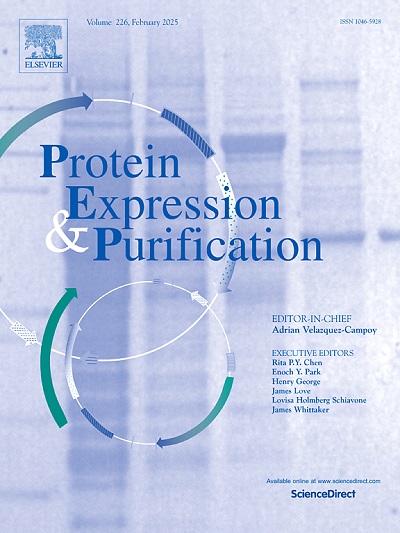从丝绸之路到生物之路——蚕生物技术。
IF 1.2
4区 生物学
Q4 BIOCHEMICAL RESEARCH METHODS
引用次数: 0
摘要
蚕与人类共享了5000年的历史,为人类的福祉做出了重大贡献。蚕的产丝能力作为21世纪生物技术中一种创新的蛋白质表达系统引起了极大的关注,导致了一种被称为蚕生物工厂的蛋白质生产设施的发展。与大肠杆菌表达系统不同,家蚕可以生产重组蛋白,并且具有翻译后修饰,易于扩展和低生产成本的额外优点,因为它们不需要生物反应器或专门的设施和昂贵的培养基。许多重组蛋白,包括分泌蛋白和膜蛋白以及病毒样颗粒(vlp),已经在家蚕中成功表达和纯化,并证明了它们的生物学功能。此外,已经开发了纯化方法来制造家蚕重组蛋白。本文对家蚕表达系统进行了全面的综述,追溯了其从过去到现在的发展历程。它强调了与包膜和非包膜VLPs生产相关的生物工程进展。此外,本文还讨论了在VLPs表面展示抗原的技术,旨在通过表面偶联来提高疫苗的效力。本文章由计算机程序翻译,如有差异,请以英文原文为准。

From Silkroad to Bioroad–Silkworm Biotechnology–
Silkworms have shared history with humans for 5000 years and have significantly contributed to human welfare. Silkworms' ability to produce silk has attracted significant attention as an innovative protein expression system in 21st-century biotechnology, leading to the development of a protein production facility known as the silkworm biofactory. Unlike Escherichia coli expression systems, silkworms can produce recombinant proteins with the added benefits of post-translational modification, easy scalability, and low production costs, as they do not require bioreactors or specialized facilities and expensive media. Numerous recombinant proteins, including secretory and membrane proteins and virus-like particles (VLPs), have been successfully expressed in silkworms and purified, demonstrating their biological functions. Additionally, purification methods have been developed to manufacture recombinant proteins in silkworms. This review provides a comprehensive overview of the silkworm expression system, tracing its development from the past to the present. It highlights advancements in bioengineering related to the production of enveloped and non-enveloped VLPs. Furthermore, the review discusses the technology for displaying antigens on the surface of VLPs, aiming to improve vaccine efficacy through surface conjugations.
求助全文
通过发布文献求助,成功后即可免费获取论文全文。
去求助
来源期刊

Protein expression and purification
生物-生化研究方法
CiteScore
3.70
自引率
6.20%
发文量
120
审稿时长
32 days
期刊介绍:
Protein Expression and Purification is an international journal providing a forum for the dissemination of new information on protein expression, extraction, purification, characterization, and/or applications using conventional biochemical and/or modern molecular biological approaches and methods, which are of broad interest to the field. The journal does not typically publish repetitive examples of protein expression and purification involving standard, well-established, methods. However, exceptions might include studies on important and/or difficult to express and/or purify proteins and/or studies that include extensive protein characterization, which provide new, previously unpublished information.
 求助内容:
求助内容: 应助结果提醒方式:
应助结果提醒方式:


